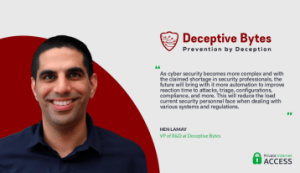Overcoming The Challenges Of Managing Endpoint Protection Solutions
More and more firms are turning to remote working and, while doing so, expect staff members to remain on top of their jobs using a variety of different devices. This increased reliance on technology means that endpoint security is becoming an increasingly talked about area of concern. Each and every day, hackers are finding ways of getting around existing protections in order to attack organizations all over the world. This is where endpoint protection can be used to help identify and defend against these attacks. Before we get into this, let’s take a closer look at the challenges that exist in the first place.
Common Challenges in Endpoint Protection
Security is becoming a much more pressing concern as more of the world comes online. With more risk of security issues arising due to the lack of protection people have in place and awareness of what they are vulnerable to, this isn’t a great outlook. All of these devices that people are using are susceptible to the range of common attacks out there, including phishing schemes and ransomware – to name a few of them. Cybercrime and malware are also becoming more sophisticated. Just as businesses look to level up, so too do the hackers. Many of these new products can even circumnavigate existing advanced detection tools, which is obviously a major concern.
Ransomware is an issue that is being discussed more and more as an increasing array of companies find themselves falling victim to it. Also, all devices connected to a particular network require auditing to keep an eye on existing vulnerabilities. Segmenting the device pool is a route that some businesses are choosing to go down. Some threats go beyond the common threat landscape and could have been better protected against with improved endpoint security, which is an issue that can get commonly overlooked.
Dealing with the Challenges of Endpoint Security
Many current solutions such as EPPs and EDRs rely on highly skilled professionals in order to utilize them all effectively. Also, they place a high level of focus on detection and require plenty of resources from organizations in order to ensure that they are effective. Even so, there is an issue known as alert fatigue that occurs due to the fact that there is a big percentage of false positives. Threat actors still find ways of circumnavigating these systems as well.
On the other hand, you have active endpoint deception, which allows endpoint security to be managed in a much more straightforward manner by people who are already at the organization. Both sophisticated and unknown attacks can be defended against. With this in mind, companies have a much greater deal of scope to be able to deal with the other cyber threats and risks that they are facing on a day-to-day basis.
Ultimately, endpoint security is going to require a holistic & layered approach to ensure that it is highly successful. Having a greater degree of control like you get from endpoint deception can certainly make the whole process much more manageable and ensures that your business is properly protected against the range of advanced threats out there.
Don’t Miss a Thing
Sign up today and we’ll send an email when new posts come out.
We collect and use this information in accordance with our privacy policy.


